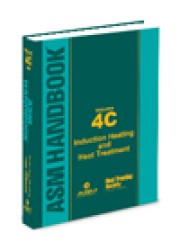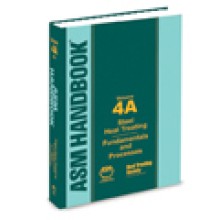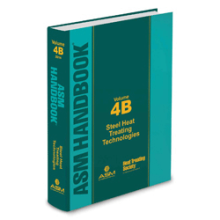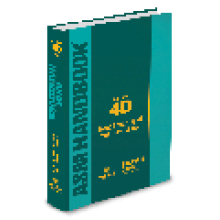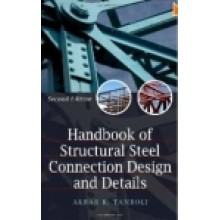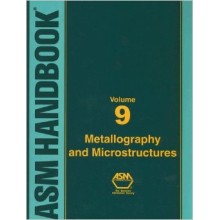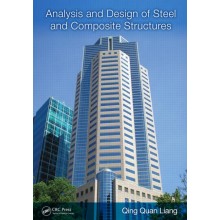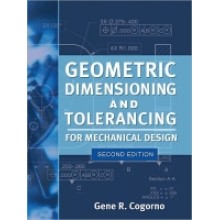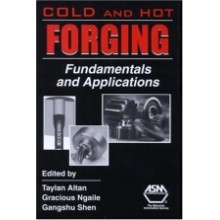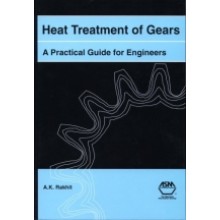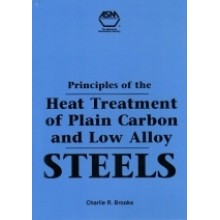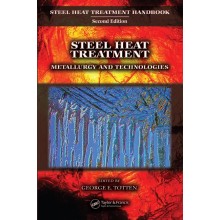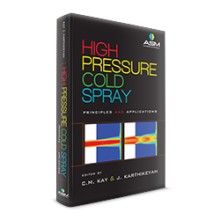ASM Handbook Volume 4C: Induction Heating and Heat Treatment
ISBN: 9781627080125
Author: Valery Rudnev and George Totten
Dispatch Time: 2 - 3 Days
Our Price: $323.00
Discount : 15%
Quantity:
-
Add to Compare
This ALL NEW ASM Handbook gives design, manufacturing, and material engineers a practical and comprehensive reference on the technologies and applications of induction heating and heat treatment. This book provides practitioners, students, engineers, and scientists the knowledge to more clearly understand and obtain solutions for typical induction heating problems that they encounter on an everyday basis.
Continuing in the tradition of the ASM Handbook series, this Volume provides a unique combination of practical knowledge grasping ready-to-use diagrams, technical procedures, guidelines, and good practices with advanced theoretical knowledge emphasizing on specifics of induction processes compared to alternative technologies. An appreciable amount of material is devoted to practical aspects, including review of standard and customized induction equipment. Special attention is paid to describing quality assurance, process monitoring, maintenance and safety procedures, energy and environmental aspects, including control of magnetic field exposure and review of international standards and regulations.
Written by internationally recognized experts, ASM Handbook Volume 4C covers the breadth and significance of induction heating and heat-treatment technologies and applications. See the sample chapter and the Table of Contents for more information. Beginning with reviewing electrical, electromagnetic, heat transfer and material science fundamentals related to induction heating, along with coverage critical facets associated with this technology such as:
- Nonequilibrium nature of phase transformation and other metallurgical subtleties related to the specifics of induction hardening, tempering, stress relieving, heating prior to hot working and melting.
- Review of ASTM and SAE standards and guidelines in proper measuring of hardness case depth and heat affected zone. Pattern specification as well as issues and complications related to different hardness measuring techniques. Destructive and nondestructive testing.
- Selection of critical process parameters and inductor styles, heat pattern control, the use of magnetic flux concentrators, quench design subtleties as well as a review and explanation of common misconceptions and erroneous assumptions.
- Formation of residual and transient stresses and their impact on a performance of heat treated components.
- Temperature requirements for heating carbon steels, alloy steels, super alloys, titanium, aluminum and copper alloys and other materials prior to hot and warm working. Novel technological developments in heating billets, bars, tubes, rods and other metallic workpieces.
- Optimization procedures and strategies in obtaining optimal process control algorithms based on various technological criteria, real-life constrains and cost functions (e.g., maximizing throughput and temperature uniformity, energy effectiveness, minimizing required shop floor space and metal loss, etc.). Principles of multiobjective optimization of induction heating devices.
- Induction hardening of critical components, including gears, axle shafts, camshafts, crankshafts, and other components used in automotive and off-road machinery, aeronautic and aerospace engineering, farming, appliance, oil and gas industries.
- Failure analysis of induction heat treated components and comprehensive review of defects and abnormal characteristics.
- Good practices in designing and fabricating long-lasting induction coils and ways to avoid their premature failures.
- Special applications of electromagnetic induction, including melting glasses and oxides, optical fiber draw, nanoparticle heating and hyperthermia applications.
- Design principles and operation specifics of transistorized and thyristorized power supplies for induction heating needs.
- Modern computer modeling and specifics of simulation of induction thermal processes.
Table of Contents
FUNDAMENTALS
Division Editors: Stan Zinn and George Pfaffmann
History and Applications
Principles of Induction Heating
Electromagnetic and thermal properties of materials
Estimation of the basic induction process parameters
INDUCTION HEAT TREATING
Division Editors: Gregory Fett, Valery Rudnev, David Matlock, George Totten
Metallurgy of Induction Hardening of Steel
Principles of Induction Hardening and Inspection
Quenching of Induction Heated Steel
Residual Stresses in Induction Hardened Steels
Tempering of Induction Hardened Steels
Induction Case Hardening of Axle Shafts
Induction Hardening of Crankshafts and Camshafts
Induction Hardening of gears and gear-like components
Induction Hardening Off-Road Machinery Components
Induction Hardening for the Aeronautic and Aerospace Industry
Defects and Abnormal Characteristics of Induction Hardened Components
MODELING and SIMULATION OF INDUCTION HEAT TREATING
Division Editors: Bernard Nacke, B. Lynn Ferguson, and Richard Sisson
Methods, Tools and Software for Physical Process Analysis and Design
Electromagnetic Problem Solutions
Thermal problem solution
Coupled problem solution
Modeling and Simulation of Stresses and Distortion in Induction Hardened Steels
INDUCTION HEATING
Division Editors: Valery Rudnev, Chester Van Tyne
Warm and hot working applications
Carbon steels and alloy steels used in warm and hot working
Temperature requirements for heating super alloys and stainless steels
Temperature Requirements for Heating Titanium, Aluminum, Magnesium, and Copper Alloys
Induction Heating of Billets, Rods, and Bars
Induction Heating of Selective Regions
Basic Principles of Optimal Design of Electromagnetic Devices and Multi-objective Optimization
Optimal Control of Induction Heating of Metals Prior to Warm and Hot Forming
INDUCTION MELTING
Division Editors: Egbert Baake and Bernard Nacke
Introduction and Fundamental Principles of Induction Melting
Computational Modeling of Induction Melting and Experimental Verification
Components and Design of Induction Crucible Furnaces
Components, design and operation of vacuum induction crucible furnaces
Components and design of channel inductor furnaces
Metallurgy of Induction Melting Processes for Iron and Non-Iron Materials
Operation of Induction Furnaces in Iron Foundries
Operation of Induction Furnaces for Steel and Non-Iron Materials
Melting of glasses and oxides
Energy and Environmental Aspects of Induction Melting Processes
Operating Safety of Induction Melting Furnaces
EQUIPMENT
Division Editor: Ron Hoppe
Fundamentals and General Aspects of Power Supply Design for Induction Heating, Heat Treating, Welding and Melting
Power Supplies for Induction Heat Treating, Brazing, and Soldering
Design and Fabrication of Inductors for Induction Heat Treating
Design and Fabrication of Induction Coils for Heating Bars, Billets and Slabs
Design and fabrication of inductors for induction brazing and soldering
Magnetic flux Controllers in Induction Heating and Melting
Systematic Analysis of Induction Coil Failures and Prevention
Transformer Design and Load Matching
Vertical Scanners, Horizontal Scanners, & Tooth by Tooth Scanners
Controlled Atmosphere Chambers
Material Handling Equipment for Induction Heating Systems
Maintenance of Induction Heat Treating Equipment
Water Cooling for Induction Systems
PROCESS CONTROL, MONITORING, DESIGN AND QUALITY ASSURANCE
Division Editors: Ron Akers and Philip Nash
Process Control, Monitoring and Quality Insurance Specifics for Induction Heating
Using Infrared Thermometers to Control Temperature During Induction Heating
Induction Heating Control System
Process Design for Induction Brazing and Soldering
Inspection and NDT methods
Control of Professional Magnetic Field Exposure--International Standards and Regulations
SPECIAL APPLICATIONS OF INDUCTION HEATING
Division Editors: Stan Zinn
Historical Review of Induction Glass Melting
Induction Glass Melting & Forming
Induction Heating in Optical Fiber Draw Processing
Nanoparticle Heating Using Induction in Hyperthermia
Write a review
Your Name:Your Review: Note: HTML is not translated!
Rating: Bad Good
Enter the code in the box below:
Copyright © 2014 Engineering Standards Bureau. All Rights Reserved.
Developed By Zoom Into Web


